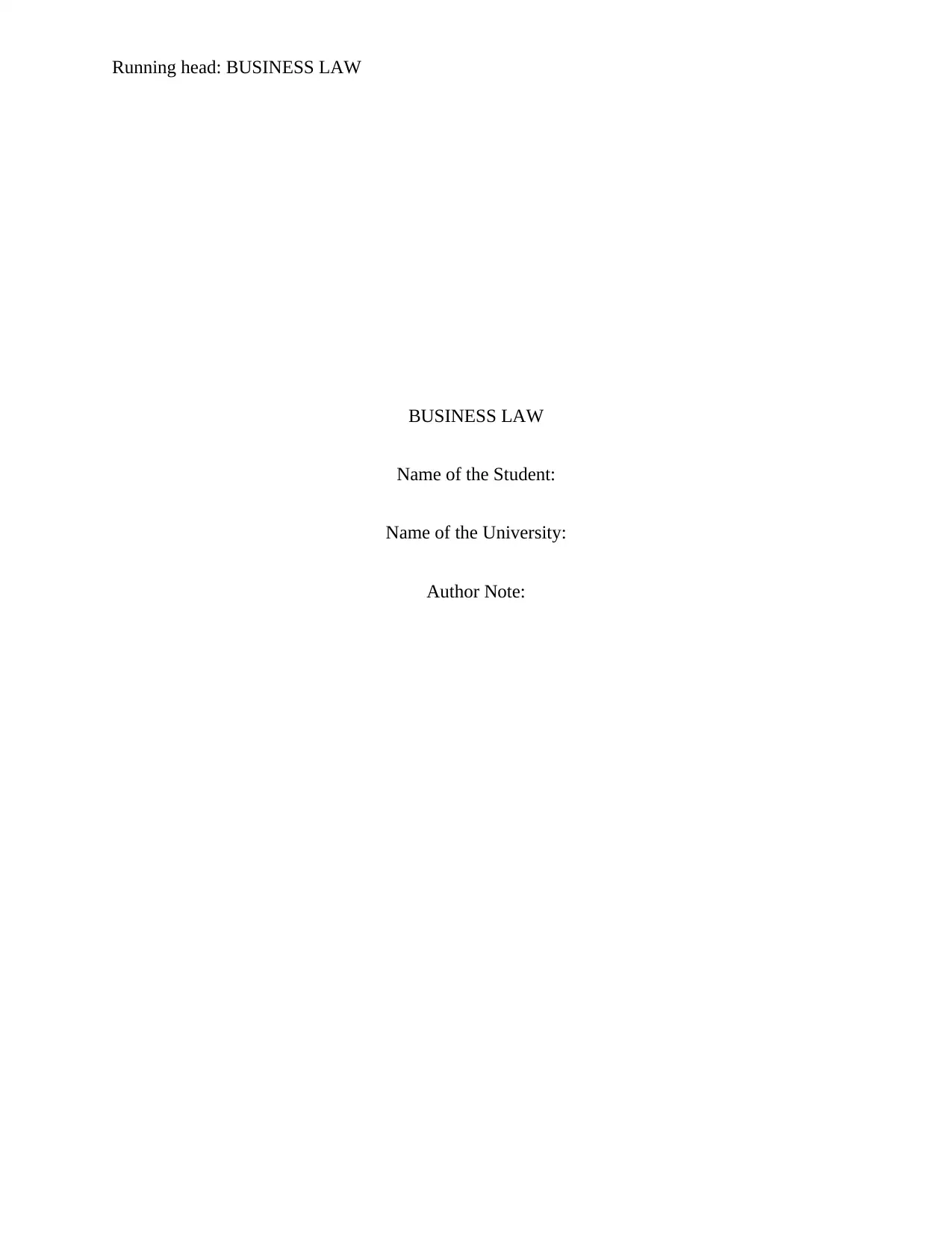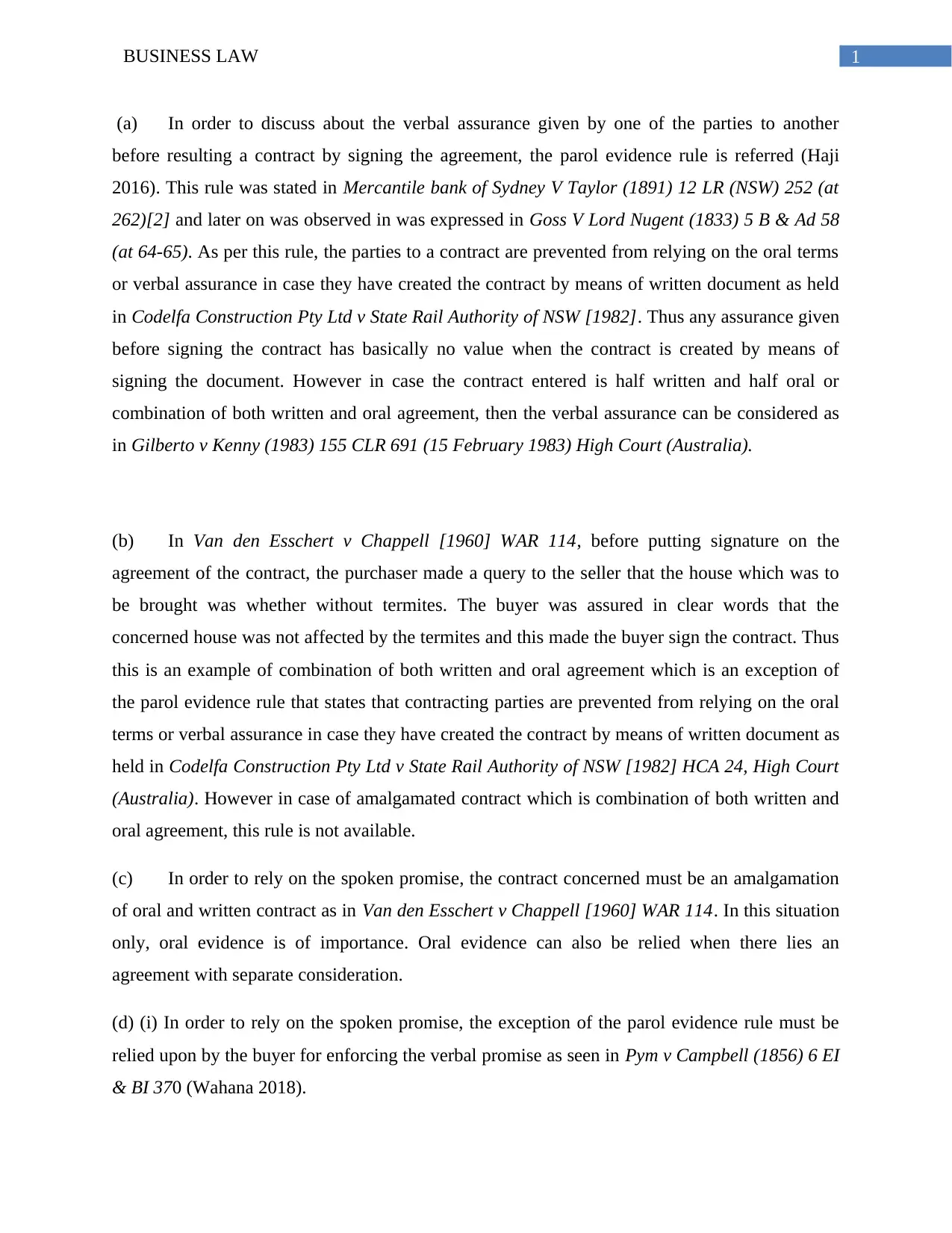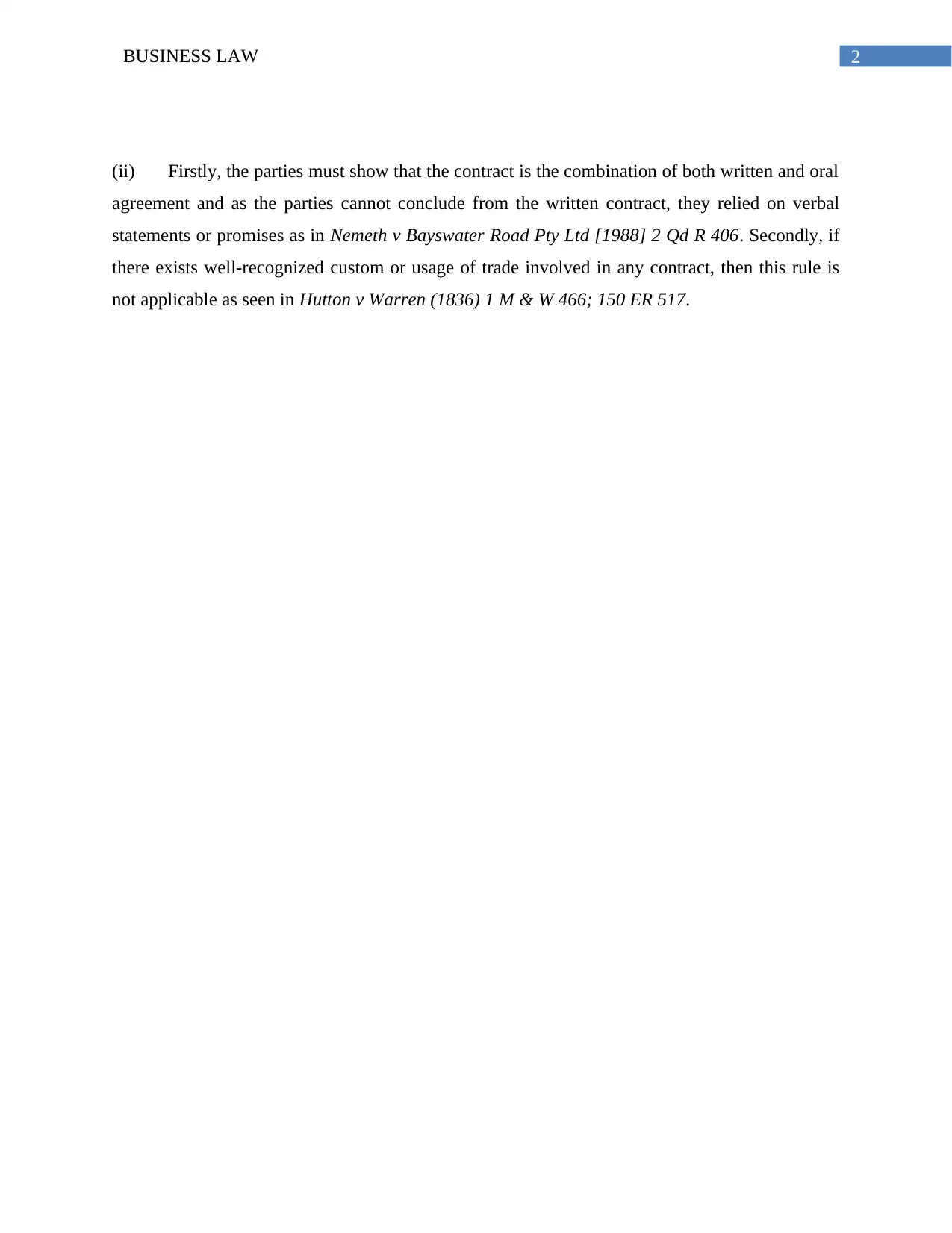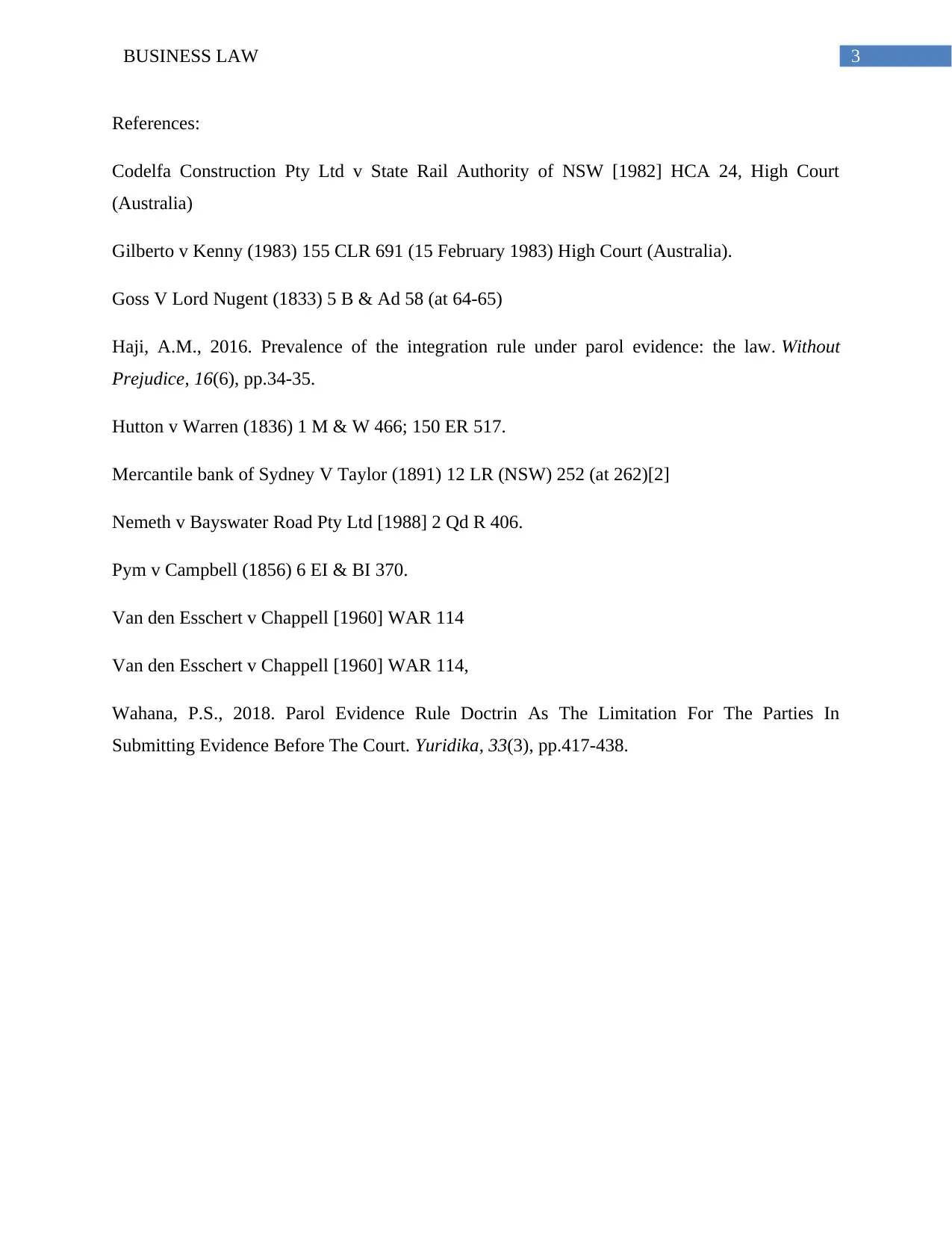Business Law Report: Analyzing Parol Evidence Rule and Exceptions
VerifiedAdded on 2022/10/02
|4
|828
|113
Report
AI Summary
This report delves into the Parol Evidence Rule, a crucial concept in business law, which addresses the admissibility of oral or verbal assurances made prior to a written contract. It begins by defining the rule, citing the case of Mercantile Bank of Sydney V Taylor (1891), and explaining that such assurances typically hold no legal weight when a written contract exists, as established in Codelfa Construction Pty Ltd v State Rail Authority of NSW [1982]. The report then explores exceptions to this rule, such as when a contract is a combination of both written and oral agreements, illustrated by the case of Van den Esschert v Chappell [1960]. The report further discusses the conditions under which oral evidence is significant, emphasizing the need for an amalgamated contract or a separate consideration agreement. It also examines the exceptions that allow reliance on spoken promises, including situations where the contract is a combination of oral and written agreements, or when a trade custom exists. The report references several cases, including Pym v Campbell (1856) and Nemeth v Bayswater Road Pty Ltd [1988], to support its arguments and provide a comprehensive analysis of the Parol Evidence Rule and its practical implications in business law.
1 out of 4











![[object Object]](/_next/static/media/star-bottom.7253800d.svg)